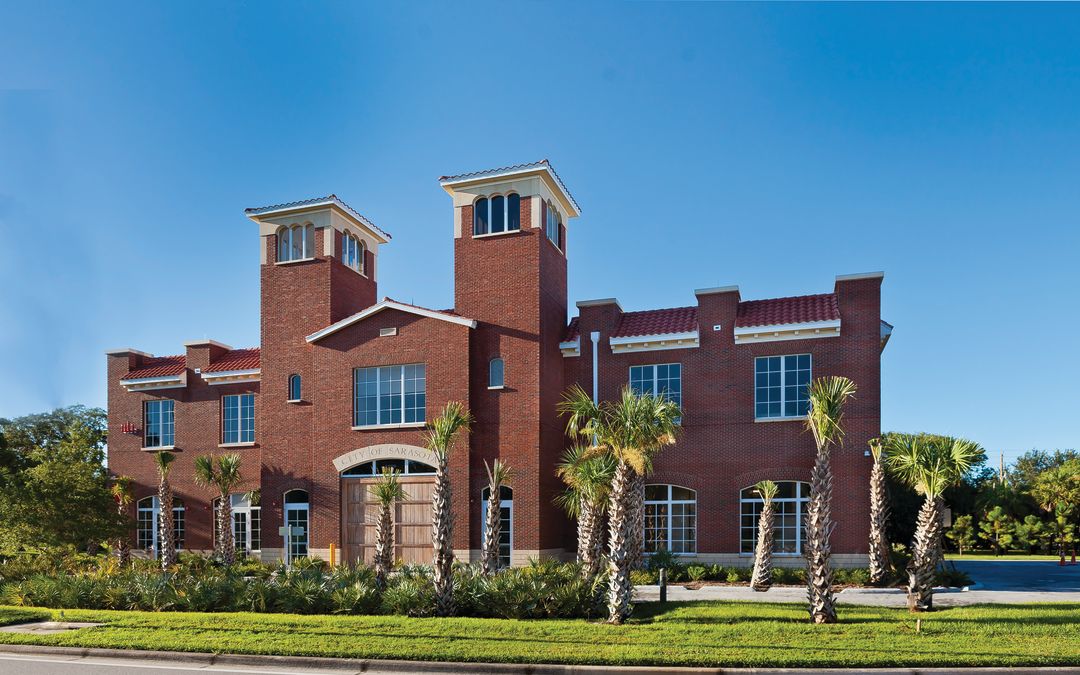The Long, Complicated Story Behind Sarasota's New Lift Station

Sarasota's new Lift Station 87.
Image: Gene Pollux
The story of building a sewage station isn’t usually a page-turner, but the tale of the new station at the juncture of Mound Street and Washington Boulevard is a genuine epic. The cost to build Lift Station 87 nearly quadrupled over the years, and the project took more than six times longer to complete than originally estimated, with added legal issues and other obstacles spiking the path leading to its recent completion. Here’s what we waited—and paid—for.
Why Did We Need a New Lift Station?
The previous one stank. In two separate incidents between 2004 and 2006, more than 1 million gallons of raw sewage spilled into Hudson Bayou, a tributary to Sarasota Bay. A 2008 order from the Florida Department of Environmental Protection called for the City of Sarasota to fix the problem, and the city elected to build Lift Station 87 and reroute the flow of sewage through new, reconfigured piping.
What It Does
Located at Luke Wood Park at 1900 Mound St., Sarasota, Lift Station 87 handles one-third of the city’s wastewater, including sewage from Sarasota Memorial Hospital. Capable of handling 9.5 million gallons of wastewater per day, it sends sewage to the city’s treatment plant on 12th Street.
Mo Money Mo Problems
Initial estimates put the price tag for Lift Station 87 at $12.5 million. More than 10 years later, those numbers have surged to $48.6 million, including $7.5 million in legal expenses. Construction was approved in 2008 and was originally supposed to take just 18 months.
See You in Court
Lift Station 87 was originally designed as an underground facility. In 2012, construction stopped, and the city parted ways with the engineering firm AECOM. The city later sued AECOM for breach of contract, hoping to recoup millions of dollars, but the jury found neither party at fault. Westra Construction Inc., meanwhile, sued the city for breach of contract, and in 2018, a jury awarded Westra $686,233 in damages.
Plan B
In 2013, the city hired a new engineering firm, McKim & Creed, that revised the original plans, calling for an above-ground, hurricane-resistant structure. Much of the previous plumbing work had to be redone, including drilling micro-tunnels deeper below Hudson Bayou than originally expected, the difficult process that led to the city’s break with AECOM.
Lookin’ Good
Newcomers often wonder about the beautiful, big brick building on Mound Street, but it’s just Sarasota’s version of an upscale sewage plant, in this case designed to look like the Hover Arcade building from 1913 that served as Sarasota’s City Hall until the ’60s. It’s also designed to resist a Category 3 hurricane. The old lift station, located nearby at 935 Pomelo Ave., is being demolished, and a new park will take its place.



